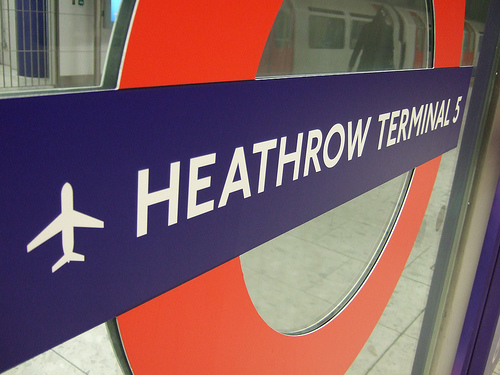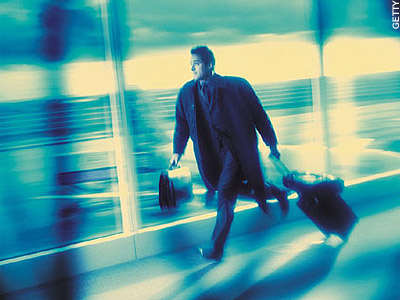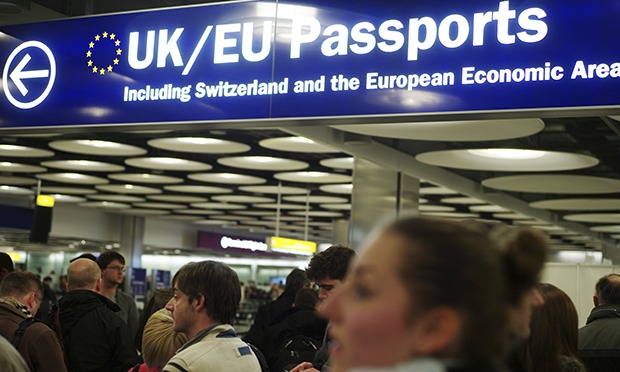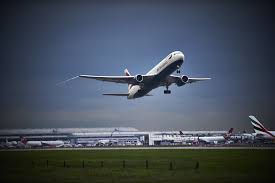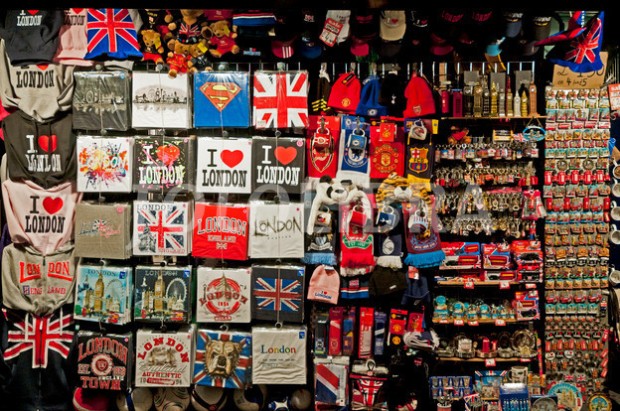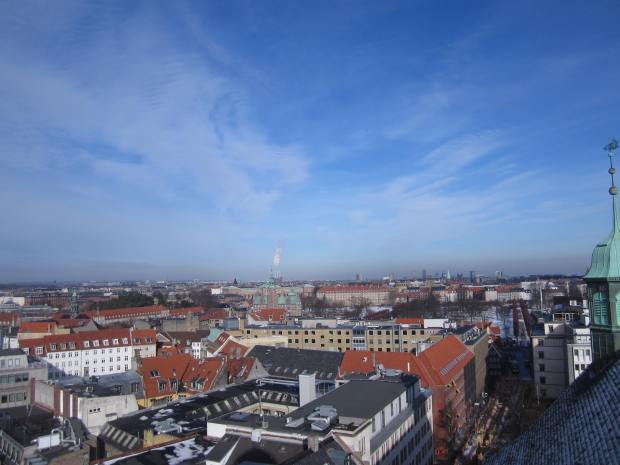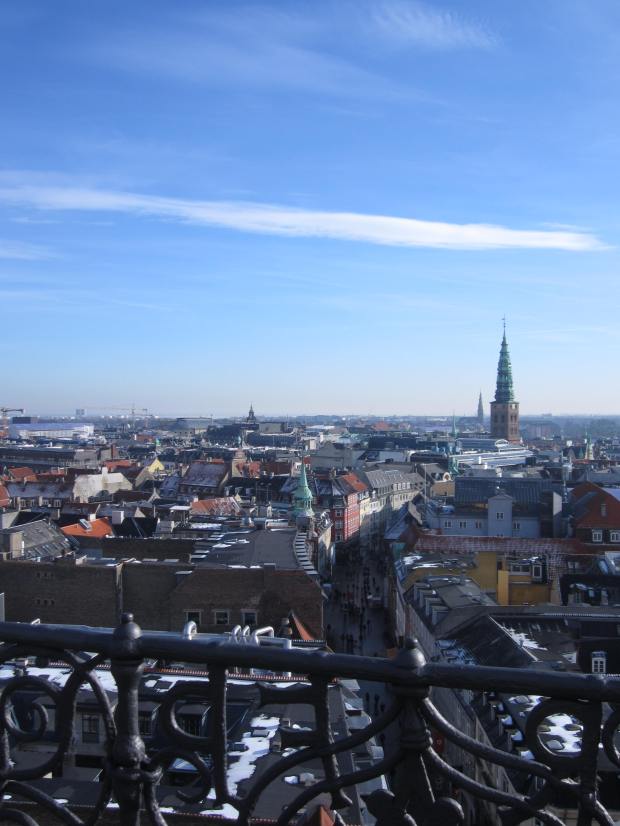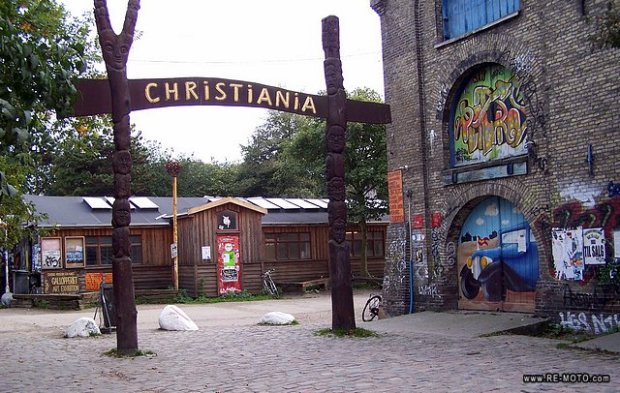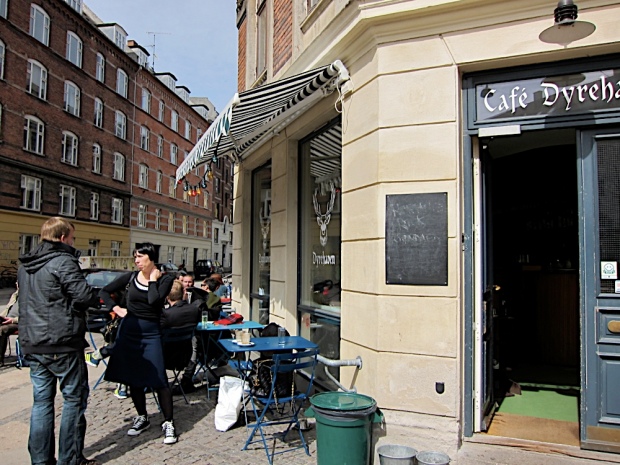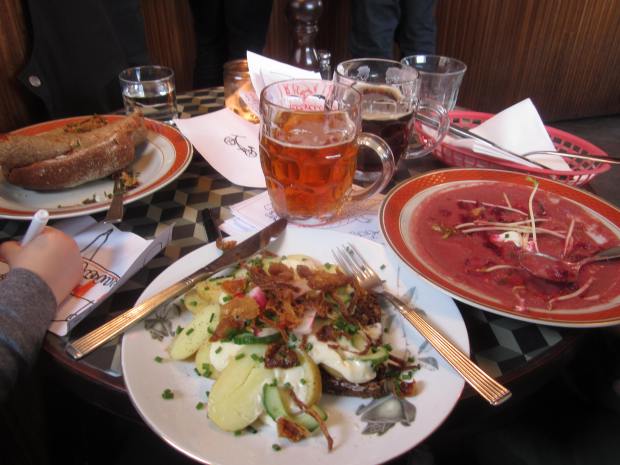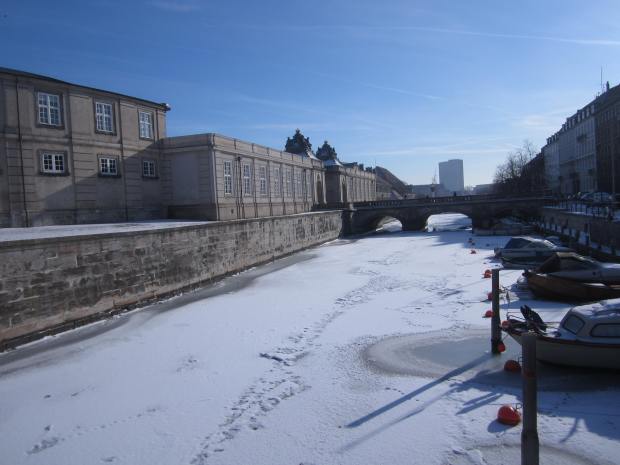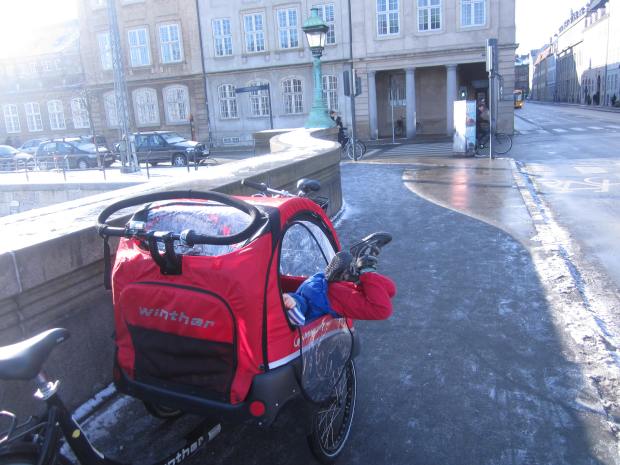What to Know About Heathrow: A Survival Guide
Travel and Fashion Writer Evelyn Franklin gives us the low down this week on one of the world’s busiest airports, and how to navigate its complex organised chaos
It can be an oasis in the desert or your worst nightmare but, at some point, you will likely encounter Heathrow Airport. It is the world’s busiest international airport serving more than 90 airlines and over 70 million passengers annually. It is also a major gateway to Europe, the United Kingdom, and of course, London. But depending which terminal you are funneled through, your experience could range from bearable to utterly tedious or even just plain ridiculous. For any that have used it, it should come as no surprise why it’s often rated one of the world’s most hated airports.
With horribly long walks to boarding gates and lengthy lines at security and border control, passengers might just find themselves taking a longer time to navigate their way out of Heathrow than it would take to fly to Spain. The airport suffers from a chronic inability to cope with the masses of travelers. The city of London is served by four other major airports including Stansted, Gatwick, Luton, and London City. But if you find yourself on a flight bound for Heathrow from one of the more than 180 destinations in 90 countries that is directly connected to the airport, we’ve got a few tips for you to help suppress any notions of air rage.
Understanding Heathrow: Know Your Terminals
Heathrow Airport is practically a city unto itself with four different terminals and a fifth on the way scheduled to open this June. Because of its vast size, security requirements, and that development has failed to keep pace with growth, the airport has earned a reputation for being overcrowded, inefficient, and full of delays. The airport operates at 99 percent capacity on a daily basis with a take-off or landing every forty-five seconds. The airlines at Heathrow seem to enjoy playing a constant game of “musical terminals” as they continuously shift operations from one terminal to another. As a passenger, you are advised to check the Heathrow website for the latest terminal updates and information. The long-term plan is to dedicate a specific terminal to each of the airline alliances in order to minimize the number of connecting passengers that will need to change terminals. The airport has uniformed volunteers in pink attire to assist travelers navigating the airport.
Top Travel Tips for Heathrow Airport
- Family-Friendly Travel: If you are travelling with children, Heathrow offers special security lanes with staff that are specially trained to work with less experienced flyers and able to accommodate families with strollers as indicated by the rainbow symbol above the detectors.
- Power Naps: If your connecting flight is delayed or you have a long layover and need a couple of hours of sleep, Heathrow offers a couple of options for travelers that need a few hours of shut-eye. Single bedrooms can be rented at the No. 1 Traveller and Yotel for a modest amount.
- Central London in a Rush: If you need to reach the city center in a hurry, the Heathrow Express train can get you to Paddington Station in just fifteen minutes for about £25. It’s an express train with no stops along the way.
- Save Cash on the Tube: It will take nearly an hour to reach central London on the Underground but it is one of the best deals in town at just £6 off-peak to anywhere in London that is served on the network. The biggest battle will be the lack of space for luggage.
- Stay Charged: All travelers like to keep their mobile phones and laptops fully charged for the journey ahead but few airports were built with that in mind. If you find yourself in a part of Heathrow that lacks power sockets, search for any sockets hidden in the floor that are typically used by cleaning staff. Alternatively, you could also bring along an adapter that converts one socket into two so that you can share outlets with other passengers.
- Beat the Security Lines: Unlike in the United States, you don’t need to present a boarding pass while passing through the metal detectors. You also don’t need to remove your laptop but be prepared to place all loose items in a tray and don’t travel with liquids.
- Eat Before You Go: Depending which terminal you are in, Heathrow offers a wide range of dining options. However, they also come at a price. You would be much better to pick up a sandwich for a pound or two at a convenience store to eat on the way.
Getting Through Passport Control
The long lines to cross the UK Border can often give passengers additional time to finish those last few chapters on their Kindle that they couldn’t finish on the flight. Frequent flyers to London know that this is to be expected as immigration officers grill passengers with five to ten questions about their intentions in the UK. If you want this process to go smoothly and quickly, there are a few things that you should know:
- Always carry proof of a return flight out of the country as you may be asked to produce one by the officer. If you do not have one ready, you may need to go through the tedious process of getting your airline to do it for you which will mean proceeding through security and into the long passport line for a second time.
- Know where you are staying as it must be written onto your entry form and the border officers may ask you where you plan to reside while in the United Kingdom. That means you should not head to London without a hotel booking. Memorize the name and the street of the hotel or carry a copy of your hotel reservation with you.
- Be able to converse in English because if you are unable to competently answer the questions posed by the immigration officer, you could be automatically diverted to another line for additional questioning and potential rejection.
Flying Out of Heathrow
If you are headed to the airport to board your return flight out of Heathrow or if you are one of the lucky folks that managed to grab a hot last minute deal on a cheap flight from London, you should be prepared to navigate Heathrow if you want your journey to get off to a seamless start. As Heathrow is an incredibly large airport, it is important to know your terminal before you depart and to allow sufficient time to check-in, get through security, and travel to your boarding gate. The recommended check-in time is typically at least three hours prior to departure. However, some passengers have reported waiting in line for up to 1.5 hours just to receive boarding cards. If you would like to save time, try to check-in online and print your own boarding card if your airline offers this service. You will also want to ensure that you are wearing comfortable walking shoes for the lengthy journey ahead.
If you are a foreign tourist and planning to take advantage of the VAT Refund, you will need to present your goods purchased and the necessary forms to UK Customs prior to checking in your luggage. You should consider whether it is worth it prior to jumping in line as some queues can take over an hour. Once you have cleared check-in and security, you can proceed to the departure lounge. It is here that you will find the majority of shops and dining outlets. You can purchase items here to bring on the aircraft with you. Take note that there are few if any shops near the boarding gates so you will want to ensure that you complete your shopping before leaving the departure lounge to avoid a lengthy walk back and forth. Some gates can take as much as forty minutes to reach and boarding commonly starts forty-five minutes prior to departure so you will need to allow yourself plenty of time otherwise you risk being left behind. Be prepared for one last line to check your boarding card before being permitted entry into the boarding lounge.
Additional Gateways to London
Heathrow’s central location makes it a convenient airport for many travelers. But if you have the opportunity to use one of London’s alternate airports, it may be a worthwhile choice that can save you a lot of time, hassle, and even money depending where you are headed in the United Kingdom. Gatwick and Stansted Airport are not nearly as busy as Heathrow and are home to less expensive charter flights. In addition, you will enjoy less congestion, shorter walks, and faster security lines. While the number of connections to London aren’t as abundant, there is always a direct link by train to the city.
London Ate My Pocketbook
Travel and Fashion Writer Evelyn Franklin takes a look at how to make the most out of this fantastic city without it taking the most out of your bank account
There are few experiences to rival the first few minutes spent in a city you’ve spent a lifetime reading about and watching on TV. In London, your first experience is likely to be one of sensory assault, especially if you arrive at one of the stations: the chaos of the crowds, the damp, musty, smell, the overwhelming grandeur of the architecture, the incomprehensible and garbled announcements. Take a moment, breathe it in, find your way to a coffee stand to protect yourself from the chaos with a shot of caffeine, and feel the next assault: the one on your pocketbook. London is likely rivalled only by New York in terms of sheer budget strain, with even other Brits grimacing at the cost of the basics here. Still, there are ways for visitors to the city to find their way around, even on a shoestring budget. Here are my recommendations.
1. Walk
The Tube map is not an accurate representation of the actual layout of the lines and stations, and there are plenty of places where various Underground stations are actually closer on foot than they are by train. Cut down on your travelling expenses by seeing more of the city above ground. Earn your pub meal by stacking up the miles, be kind to your pocket, and see more of the sights, all in one go.
2. Choose Your Accommodation Wisely
There are a few standard accommodation options, and most of them aren’t good ones. If you’re on a budget, chances are you’re looking for a hostel: don’t. You may get lucky, but in my experience, London hostels are still horrifically expensive, and many are seedy to boot. You may end up paying an exorbitant rate to be stuck in a damp, dark room with 20 strangers, twelve of whom snore like drains and three (yes, three) of whom are having sex. Unless you’d like to have bed bugs for the rest of your life, choose a hostel very, very carefully, or steer clear. The standard alternative – a large chain hotel, even a cheap one – is not likely to be much better overall: it’ll probably be cleaner, but will also probably break the bank significantly more. So what are your options? One good avenue to explore is to look for timeshare that’s going begging – this can be a better deal and greater comfort than a cramped hostel or dinky hotel. Another good bet is to look for self-catering accommodation, especially if you’re travelling in a group: if it’s just you, it may not work out cheaper, but if you can cram four people into a one-bedroom apartment with a sofa bed, you can split the costs of grocery shopping and save cash by eating at home. And finally, if you’re really broke, look into couch-surfing, which is a sure-fire way to meet excellent people (and a few wonderful weirdos), and end up with your own friendly traveller in future months.
3. Head Away From The Crowds
Let’s face it: the best bits of any foreign city are not the ones that people flock to in droves. Save your precious London cash by avoiding the most garish of tourist attractions. A wander around Southbank is definitely worth your time, and you can admire Westminster Abbey and the Houses of Parliament at your leisure, without having to elbow-wrestle with fourteen hundred other tourists to catch a glimpse of something interesting. If historical London really floats your boat, pick a few sites that you absolutely must check out, but don’t blindly go along with what every travel blog ever tells you that you “have to see”; read the reviews, do your research, and narrow it down. Chances are high that you’ll have more enchanting memories from an afternoon’s wander round Covent Garden or a spectacular evening in a pub than you will of the overpriced stampede at the Tower of London. Even those ten minutes you spent with your cheek flattened against the train window when you caught the Piccadilly line at half past five in the evening were probably more fun (and cheaper).
4. Don’t Fall Prey to the Souvenir Junk.
What do you think you’re going to do with that “Mind the Gap” t-shirt? It’s not original, or clever. Neither is your miniature London bus. It’s understandable to want to accumulate some mementos to take home with you, but try to make them unique or useful at the very least. Buy a fantastic piece of art at a little market, or a warm scarf that will remind you of London for years to come. If you must buy a standard souvenir, keep it small and cheap, like a fridge magnet or shot glass. That way you won’t weigh down your luggage with unnecessary junk, and when you get home and realise you don’t need it after all, it won’t be difficult to find a place to keep it. Plus, you’ll have saved yourself all the expense of loading yourself up with themed coasters and umbrellas.
Things to do before the end (of your life in London): The Magic of the Theatre!
Slightly misleading post title, I know. I mean it’s purely theoretical. I don’t have any plans to leave at any point soon. Why would I? Duh, it’s London.
There are of course push factors: lack of any family in close proximity to us, a moderate to small flat with no outdoor space, Michael Gove, David Cameron, you get the picture. But frankly, nothing’s reached tipping point yet. My son’s in a good school that The Missus and I both like, modest though our flat is, we’ve made it our own and we may not have a backyard or front yard garden, but we do have a lovely flat roof veranda that we have to struggle to climb through the window to get to adjacent to the bathroom loo. So, why would we want to move from this dreamy place?
I digress.
I’ve been to more theatre than ever this year, courtesy of a few different online and print publications that I’ve been reviewing for and I feel so privileged to be able to have done it and to keep doing it. The truth is theatre in London is nothing less than phenomenal. Though the first item on your bucket list in one of the greatest cities in the world may not be to spend two hours in a darkened room with crowded strangers, there are good reasons why it should be.

I usually don’t say this, but I liked the film better. A lot better. Image from londontheatrebookings.com
Obviously, you’ve got The West End. Word Famous. Who hasn’t, right? But it really is the overpriced tip of the iceberg. Any chump can wait in line at a kiosk in Leicester Square, part unthinkingly with 100 quid for two seats with restricted viewing to see Billy Elliot and go home happy, having gawked at Elton John’s vision of the working class in the North of England. What you’ve got to do is explore.
Pre-parenthood days, when we first moved to London, the weekend consisted of picking up the Guardian Guide in the Saturday Edition, paying £6-12 a ticket, and seeing some marvellous, or appalling theatre. Whether it was marvellous or appalling, it was always engaging, in only the way that a performance that utilises space, human voice and movement, and the deep connection between performer and audience can engage on that deep, penetrating sort of gut level. I have seen Paul McGann reach heights of magically realist redemption in a backroom space of a pub in West London in Tom Murphy’s The Gigli Concert, took a student group to see a version of The Tempest in West End that was heavy on trapeze artists but fell just short of meaningful, was genuinely touched by Samuel Beckett’s ode to Vaclav Havel, Catastrophe, failed to be moved beyond audible snoring in a dishwater-dull perfunctory attempt at Faustus in The Arcola several years ago, and recoiled in horror at a character’s eyes being gouged out of their sockets in the basement of Shoreditch Town Hall as part of Serpent’s Tooth, written as a response to a production of King Lear. But my greatest, most heartfelt, and most intensely cathartic experience in London theatre was in a tiny little performance space underneath a pub in Baron’s Court, near Knightsbridge. The production was a version of Lorca’s Bodas de Sangre (Blood Wedding), an immersive performance that set you up with a frame story lulling you into a false sense of safety until the actors turned everything on like a switch about 10 minutes in and from there to the end of the night it was a joyfully bleak journey to the utter depths of the human capacity for pathos.
Because theatre’s a risk, always. More often than not, I’ve been gripped and even when I haven’t, I’ve been provoked by what didn’t but should have gripped me. It’s a cognitive process that happens rarely for me with movies, and almost not at all with TV, probably because my most UnAmerican tendency is not watching it much.
My judgement of course could be somewhat flawed having never been much exposed to theatre when I was a kid, hailing from a small rural town in a mountainous region of District 12 and raised by wolves. My first real memory of proper theatre was a local university production of Waiting for Godot, in which the actors pronounced it Godot as opposed to what the rest of the world say, Godot (Cue Beckett’s gaunt and ghostly cyberfist shaking in indignation), beginning a lifelong obsession with Irish absurdist. But that it is the main reason why I review plays; not because it’s good practice or because it adds to my portfolio, but because I find theatre, especially here in this great metropolis, breathtakingly inspiring and that it lifts my mind off the ground nine times out of ten well after I’ve exited the foyer and am out on the street.
So if you’re in town, go to see a play. There’s nothing wrong with paying a lot to see a play in the West End (there could well be much wrong with paying through the nose to see a musical, but that’s another blog post) and you most likely won’t be disappointed by your investment, but it’s more fun, less expensive, and more of a unique experience to get out into the smaller theatres and performance spaces and see what’s out there.
Go on. It’s worth the risk.
Won-derful, Won-derful, KØBENHAVN!
As the Northeastern United States has finished recovering from the inexplicably named Superstorm Nemo, and as we prepare to head off to Oslo for a few days, I reflect this week on our Northern vacation last February up to the city of Hans Christian Anderson and macabre, underplayed murder mystery serials, the Danish capital of Cophenhagen.
It’s true, some prefer to go someplace warm and Mediterranean to escape the cold — hours lounging on the Costa Del Sol perhaps or maybe some Island hopping in Sardinia and Corsica — but not us. My wife, being Irish, tends to react to the sun the same way the witch of the west reacts to water, and I, being raised in Northeastern Pennsylvania on the Mount of Pocono… by wolves, tend to prefer the cold wintry winds and see them like a refreshing tonic to the system. Besides, the missus has a penchant for design and no one is more beloved in the design world right now than the Scandinavians. And I’m easy and I like the ancient and proud notion of beautiful and desolate North.
And Easyjet flies there fairly cheaply. Bonus!
But I have to admit, aside from visiting the Design Museum and the Lego Flagship store (Lego is Danish! Yes, really!), we didn’t really know what to expect of Copenhagen. It turned out to be full of surprising delights.
Going from Place to Place
Transport for instance, which, I know, is usually relegated to the end of the writeup under a subheading like “getting around” or “Tubes and buses” or, in some countries, like Ireland, “Good Luck”, was one of the most exciting elements of our Danish getaway. We touched down thinking that it was a Scandinavian city and so bound to have an efficient underground and bus network of which we would take full advantage. But by our first evening, we couldn’t help but notice that there was really only one main, preferred mode of transport: Bikes!
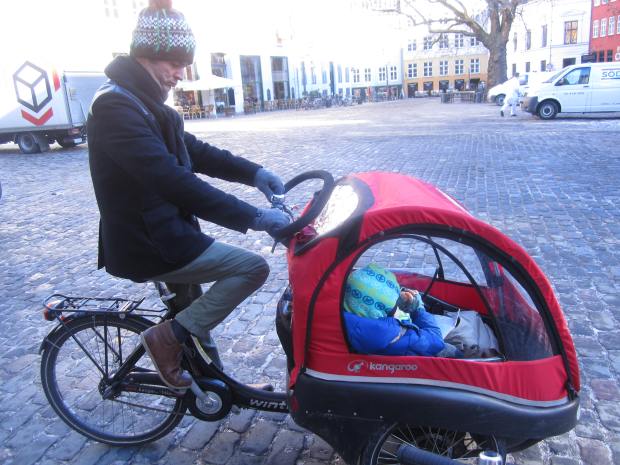
Ring my bell? Me, looking ever so slightly confused pedaling my son around in one of the famed Christiania Bikes. (photo by Paula Hughes)
Everyone rides a bike in Copenhagen, including the tourists. And because of the sheer joy of doing as the Romans do but not having done it in years, this became our healthiest holiday in years. We rented a standard issue four speed for the other half and a Christiania Bike, the kind that were actually invented in Denmark, in which to transport my son.
And we biked for miles every subsequent day of our stay. Gloriously, we cycled through snow, over bridges, in sun and warmth, in traffic and out of town until our leg muscles ached with a kind of gladsome soreness at the close of each day. As Copenhageners are well catered for with cycling lanes on every road, cycle traffic lights, and even metal footrests for when you are waiting for a light to change, biking in this bustling hub was easy, exhilarating, and inspiring (we bought bikes on our return to London). And for my money, the only way to travel around.
The Views
Other impressive elements of the Danish capital included its sheer and audaciously impressive grandeur. We visited the Rundetarn on our first full day and were awed. A cylindrical edifice built in 1642 by King Christian IV as an astronomical observatory (Remember Tycho Brahe from Science class? Danish.), it is essentially a cobblestone pathway that ascends spirally for 686 feet affording a breathtaking view of all of the city from the top.
The “Quirky” Neighborhoods
When we first started exploring different parts of the world, being vegetarian, we acquired the habit (naturally) or seeking out vegetarian restaurants in each new city. It’s become a kind of pastime and it always tends to lead us into the most intriguing parts of a city. Thus you will find vegetarian cookery in The Lower East Side, Soho (the original, you know William Blake’s Soho), Stoke Newington, Kensington Market in Toronto, Montmartre in Paris, and artsy, bohemian neighborhoods in Edinburgh, Amsterdam and Madrid. So it was with Copenhagen, but the area, in this case, formed part of the main “destination” or attraction.
The Freetown of Christiania is a ramshackle collection of dirtstreets, homemade houses, caravans, corrugated iron roofed houses, and some new cheap chic looking warehouse studios that falls within the confines of Copenhagen, but outside its laws. Originally a deserted military barracks until squatters took up residence in the 70s, it now boasts a 1,000 residents. Drugs can be bought fairly openly on the streets and there is a wonderfully hippy-dippy free spirit about the place. Despite being on the map, it’s also charmingly difficult to find. We ate hearty vegetarian stews in a clapboard cottage-housed cafe called Morgenstedet and despite the food being delicious and the staff being uncharacteristically effusive (the Danes don’t effuse), the fire-in-a-steel-drum charm of Christiania wore a bit thin on us and we began to worry about the safety of our bikes.
Still, a fascinating wander off the beaten path just for the sheer sight of this community outside of the laws of its surrounding community. And the cheapest hearty lunch to be had in Denmark.
Lego!
Yes, we all love Lego and it was a brilliant store, but even more brilliant was how child-friendly a city it was and how child-centered a culture it seems to be. Scandinavians don’t tend to send their children to school or even think about teaching them explicitly how to read until they’re about seven. It may all sound a bit Steiner School, but it also values the idea of a child being allowed to have a free and well adjusted childhood full of play. Not for nothing do our Northern neighbo(u)rs give some of the most generous parental leave of any country in the developed world. Children are encouraged to form strong bonds that will see them through adulthood with confidence. Parents and their charges are openly affectionate and lavish attention lovingly and unashamedly. We could learn a lot.
Plus, Lego!
Food and Drink
It surprised me that Copenhagen has recently developed into a culinary capital, but it was a surprise beyond mere joy, especially with a fantastic place like Bio Mio.
Food is comforting and divine, but the fun element is in the ordering — from a “mood-based” menu, directly from the chefs. I ordered from our chef, trying my one stock Danish phrase, “Taler du Engelsk?,” to which the Danes stock reply was, “Yah. Of course.” To this day, I can’t figure out whether “Yah, of course” is a stock reply they learn when in school or whether they just think it’s mind-numbingly obvious to any foreigner that all Scandinavians speak English better than quite a few native English speakers, but whichever the case, it’s delivered with such amiability and charm that it has to induce a smile, as did our night of dining at this lovely eatery.
And for lunch to Dyehaven, which, again, reminded me of a trendy place you’d find in the lower East Side, or rejuvenated and trendy West Philly, with its artsy locals meeting for a pint over some warming vegetable soup or some impressively tasty beetroot-dependent vegetarian smorgasbord, which of course, we could not leave Denmark without trying. As in the UK and the US, the craft beer movement is in full swing here in Denmark and the local brews were delightfully sophisticated, a party on the palate for the beer connoisseur.
And who could forget, Danish Pastries! They really are delicious, but they don’t really call them Danishes in Denmark.
Well, they wouldn’t, would they?
They call them wienerbrød (literally “Viennese Bread”) and really, what better way is there to start the day. I can’t imagine a single health benefit, but some mouth-wateringly flaky wienerbrød topped with chocolate or cinnamon does transport you. It transported me anyway.
Best of all though… Snow!
Some people really despise snow. They can’t stand the cold, are frustrated by the icy roads, and won’t take a step outside.
I wonder if those people have ever been to Copenhagen.
Although I’m often asked if I miss America, one of the things I miss most is a proper snowy winter to rejuvenate the soul. Snow, having fallen faintly and faintly fallen gently on the back or our necks hours after checking into our hotel in Copenhagen, snow that chilled the air and seeped into our bones, invigorating our constitutions, that froze the harbo(u)r as we strolled through Nyhavn, packed tightly as we threw it at each other with gusto, snow that rested gently on every branch and bough as we rode through light layers of it, covering the streets of Frederiksstaden, on a crisp morning on the way to a comforting breakfast, snow renewing an innocent spirit of joy. Here it is in the far North in all its arctic, purely driven, exhilarating grandeur and glory (yes, thank you Geography majors I know that’s not quite correct) in a place that wears a dusty blanket of snow with a particular panache.

“His soul swooned slowly as he heard the snow falling
faintly through the universe and faintly falling, like the descent of their last end, upon all the living and the dead.” James Joyce, “The Dead”
And with that, we turn our heads away from the snowy North and its enthrallingly desolate beauty and turn our heads towards Spring, which is supposed to come early according to Punxatawney Phil. Before we do, here’s another ode to the Danish storyteller Hans Christian Anderson, an oldie, but goodie.
All photos were taken by Paula Hughes.
